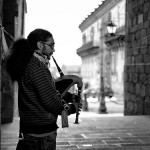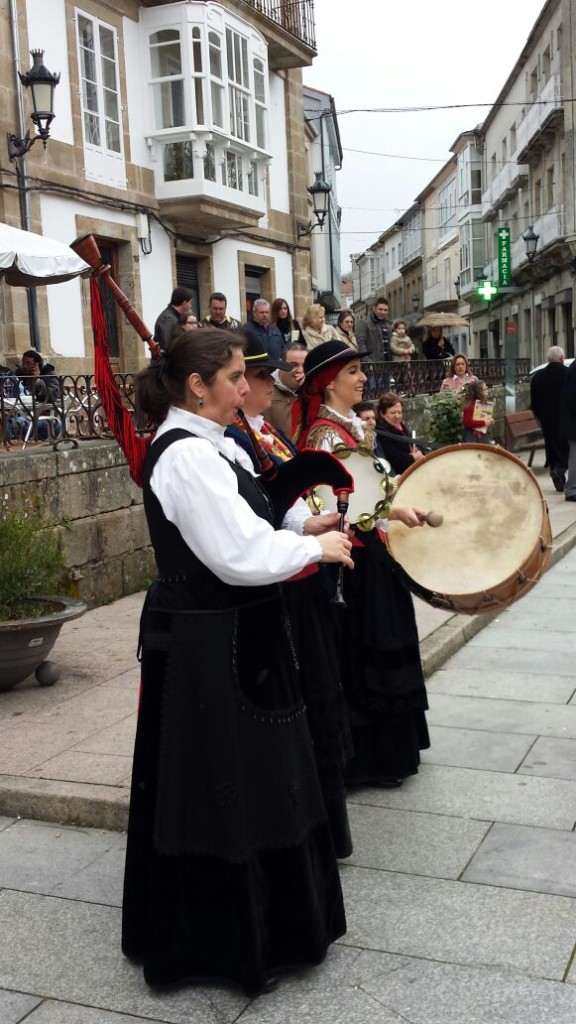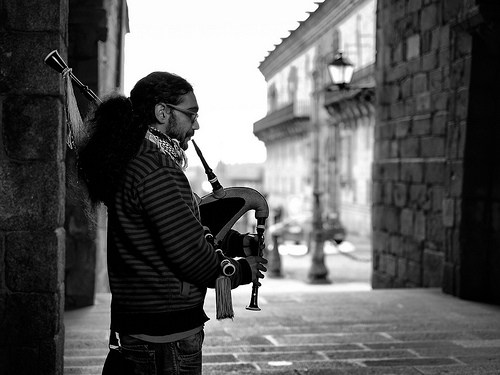 The blending of cultures can be a beautiful thing, but it can be a bit of a head-scratcher at first! As I was walking down the streets of Córdoba, Argentina, I saw a performer playing the bagpipes while his partner played the drum.
The blending of cultures can be a beautiful thing, but it can be a bit of a head-scratcher at first! As I was walking down the streets of Córdoba, Argentina, I saw a performer playing the bagpipes while his partner played the drum.
Bagpipes?!
In Argentina?!
I was used to seeing this display on the Royal Mile in Edinburgh, but not in the southern hemisphere. The street performer did not seem like he was Scottish or Irish, and his bagpipe looked different from the ones I had seen in Scotland. I was baffled, and I tried to use logic. He could just play it because he wants to. I mean, you don’t have to be from the British Isles to rock out on a set of bagpipes. After taking blurry photo evidence of this encounter, I went along my merry way, still a bit confused.

It was only after my semester abroad did I take a class back at my home university that explored the different cultures of Spain that it all started to make sense. At one point in history toward the Middle Ages, the Irish settled on the northwest coast of Spain because the Vikings kept raiding their homeland. My professor told my class that not only do they hold on to a tradition of playing bagpipes, or gaitas in Galician (the Spanish dialect of the region above Portugal), but they also still have somewhat of a presence of red-headed people and names that represent both cultures, such as Seamus Fernandez or Hernando O’Malley (so I hear, I only wish I could meet someone with a name similar to those!). As a lover of everything Scotch/Irish and the language of Spanish, my mind was blown. Yes, in fact, there is a place where this is a cultural norm! After looking at pictures of the Galician coast, I could distinguish geographical similarities between the coastlines of Ireland, Scotland, and Galicia. They all have chilly temperatures with very cold water and high rocky cliffs for their shores–not to mention drizzly, rainy weather. I bet the Irish immigrants felt at home when they first arrived!
Last year, one of my best friends spent a year as an Au Pair in Germany. We would Skype once every two weeks or so to catch up on things. In one particular session, she told me that she was going on a surfing trip to “some place called Galicia,” and I flipped out. I told her to keep her eyes peeled for red-heads and bagpipes! Laughing, she agreed. She was accompanied by a girl from California and a boy from a village outside of Madrid for this trip. As she was walking around Galicia with her friends, she began telling them about the bagpipes. “That’s not a thing here. I’ve never heard of that before,” said the Spanish boy. Sure enough, as they turned the corner, there was A CIRCLE OF BAGPIPERS belting out Galician tunes! He couldn’t believe it, and my friend was already whipping out her phone to document this cultural event for me.
I have yet to journey to Galicia to soak in this wonderful mixture of cultures, but I know it will happen one day! As confusing it was to come across that street performer at first, it sparked an interest to figure out if this indeed was a part of Spanish culture. There are Galician culture centers sprinkled throughout the world due to the large amount of Galician immigrants, including huge multicultural cities like New York City and Buenos Aires. Now that I think about it, I guess it wasn’t that strange to see that bagpiper in the middle of Argentina after all! Scottish, Irish, and Spanish cultures are enchanting, but the melting of these in the heart of Galicia truly makes me smile.
Note: Black and white photo credit photo credit: via photopin (license)
 About the Author: Abbi Eidt studied abroad in Scotland and Argentina. She is an international educator based in the beautiful Pioneer Valley of Western Massachusetts. You can read more about her here.
About the Author: Abbi Eidt studied abroad in Scotland and Argentina. She is an international educator based in the beautiful Pioneer Valley of Western Massachusetts. You can read more about her here.

